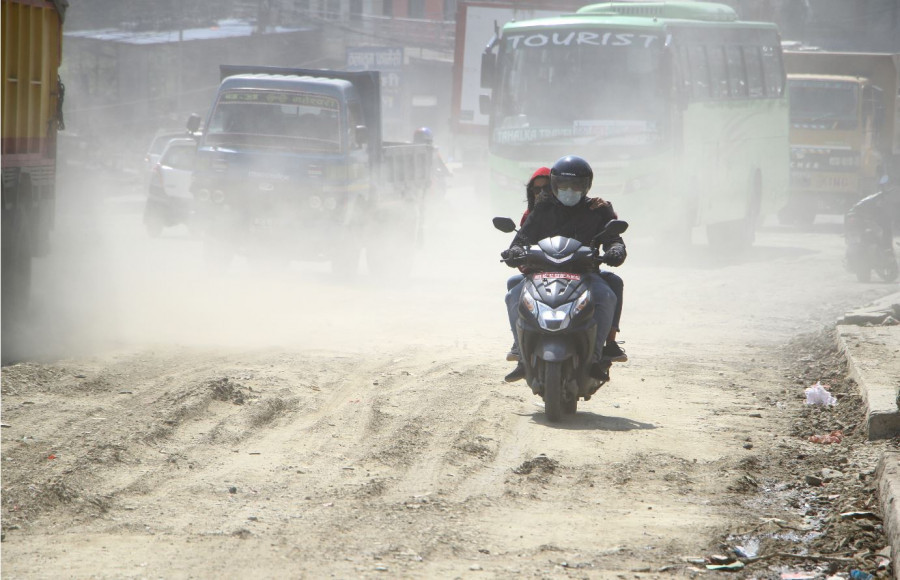Editorial
Clean air must be guaranteed
Air pollution should be controlled by getting to the cause of the problem.
Nepalis have been enduring poor air quality for years now. And every year, they look forward to a few months of fresh and clean air during the monsoon when the rains wash down harmful suspended particulate matter in the atmosphere. Now, this little bit of respite too is disappearing. Prime Minister KP Oli claimed in late June that Kathmandu was ‘dust free’, and that Nepalis need not wear air pollution masks anymore. While those claims were ridiculed outright, the situation has barely improved even a month later, in the midst of the monsoon season, with the particulate matter still causing air pollution. The government needs to fix this issue, not by making false claims and taking ad hoc measures, but by getting at the cause of such pollution—dust and emissions.
The main causes of air pollution are ozone in the lower atmosphere, nitrogen and sulphur oxides, and particles suspended in the air. While ozone and other pollutants go through seasonal variations that are harder to understand, governments worldwide use Air Quality Index (AQI) levels for PM2.5 (particulates that are smaller than 2.5 micrometres in diameter) to check the breathability of air.
The US Embassy’s air quality monitor at Phora Durbar, near the heart of Kathmandu, showed the PM2.5 level at 51 AQI at noon on August 8. In fact, the Nepali Times, using US Embassy data, tweeted yesterday that the PM2.5 levels in Kathmandu Valley for the period covering August 2-8 has consistently ranged between the 50-100 range. What’s worse, AQI levels in parts of the Valley during the second and third week of July, around the time of the heaviest rains this monsoon, ranged as high as 165 AQI. Such high levels during the monsoon, when the rains typically wash down particles in the air, do not bode well for the quality of the air that we breathe in the long run.
There are a number of aspects that have contributed to the worsening air quality. One is that the country’s road repair systems are poorly planned. Roads are dug up routinely for a myriad of reasons, only to be left as it is for months, even as the sandy roads contribute dust to the air. The ever-expanding trade deficit has also not stopped the increasing purchase of foreign-made private vehicles; most of these are fossil fuel-guzzling and are inefficient in terms of the number of passengers they carry as opposed to mass transport. Moreover, even with great potential for hydroelectricity and the availability of sunlight during the winter months, Nepal continues to rely on fossil fuel imports (subsidised for personal consumption) and on fossil fuel-powered electricity from India.
The only way forward for the government, both local and federal, is to promote measures that are long-lasting. Roads that are dug up have to be blacktopped immediately after any public work is done. The adoption of mass transit systems, so that people rely less on private vehicles, are also an important starting point. To promote this, the government can provide fuel subsidies to commercial operators while completely revoking all such provisions for personal consumption. In the meantime, the government has to promote the domestic production of clean electricity—from solar and hydropower sources.
***
What do you think?
Dear reader, we’d like to hear from you. We regularly publish letters to the editor on contemporary issues or direct responses to something the Post has recently published. Please send your letters to [email protected] with "Letter to the Editor" in the subject line. Please include your name, location, and a contact address so one of our editors can reach out to you.




 16.12°C Kathmandu
16.12°C Kathmandu














